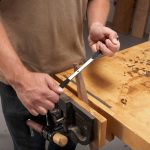We may receive a commission when you use our affiliate links. However, this does not impact our recommendations.
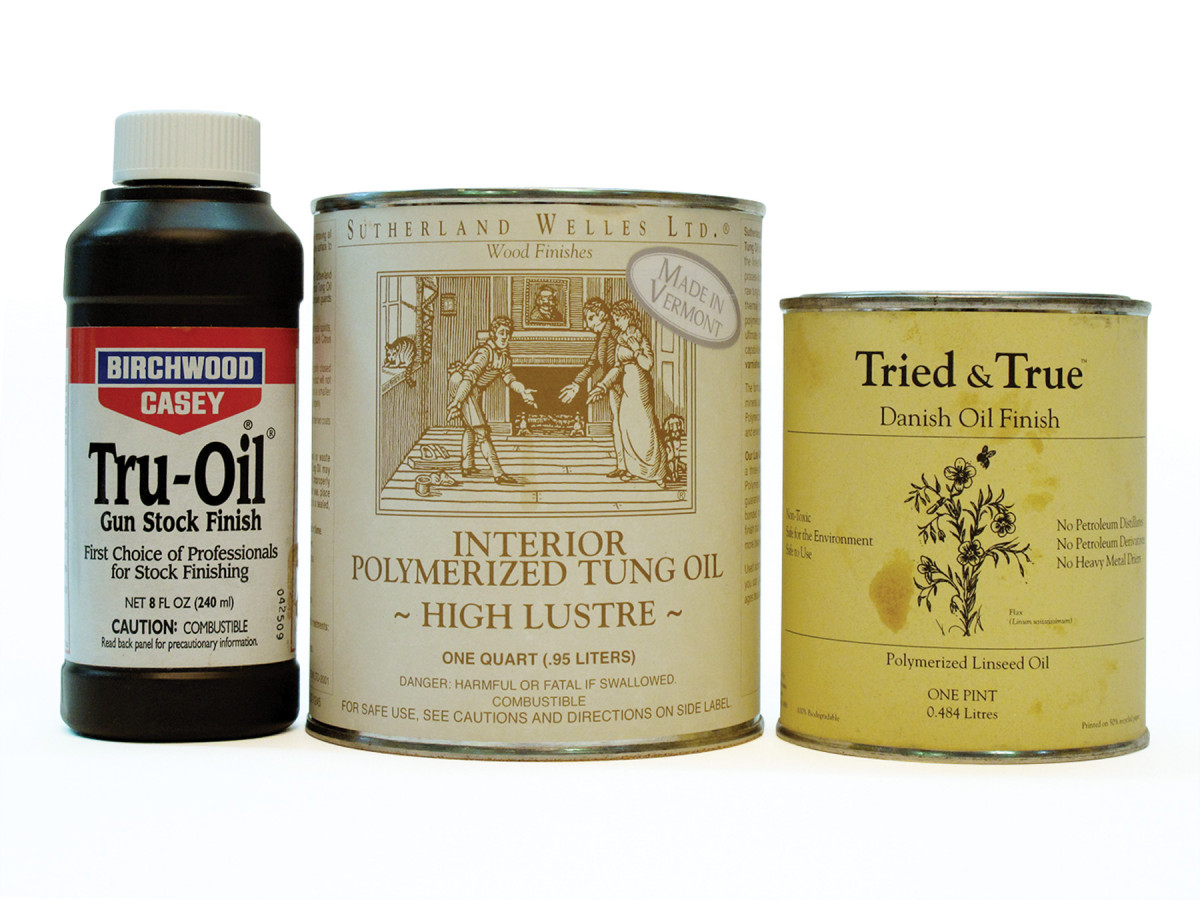
Three “polymerized” oils. The three oils that have some claim to being polymerized are too different to be thought of as a category.
Simple in theory, not in the real world.
A reader of my blog asked me to explain what polymerized oil is. So here goes. On one level the explanation is incredibly simple and on another it’s representative of all that makes finishing and finishes so hard to understand. Let’s begin with a definition of polymerization.
It is nothing more than the way certain finishes, including oils and varnishes, cure – that is, change from a liquid to a soft or hard solid. Oils cure soft; varnishes cure hard. Polymerizing is simply crosslinking. A whole bunch of monomers, which are single molecules, attach themselves to each other chemically to form polymers. That’s polymerization.
The most common way this happens with oils and varnishes is by oxidation. Oxygen enters the finish and causes the molecules to hook up, or crosslink. Metallic driers, which are often sold separately as “Japan drier,” act as catalysts to speed the drying. Boiled linseed oil and all varnishes, including polyurethane varnish, have driers added by the manufacturer. Raw linseed oil doesn’t have driers added, so this oil takes a very long time to cure – often months, even with all the excess removed.
Tung oil, the other common drying oil besides linseed oil, doesn’t have driers added by the manufacturer. But this oil dries rapidly enough so that it can function as a wood finish. The caveat here is that you have to be careful if what you want is really tung oil. Most of the products labeled tung oil are actually varnish thinned about half with mineral spirits (paint thinner). Instead of drying soft and slowly, they dry hard and much more rapidly. If a thinner is listed on a container labeled “tung oil,” the product is thinned varnish.
It might help to make a distinction between oils and varnishes that haven’t polymerized yet and oils and varnishes that have had something done to them by the manufacturer to start the polymerization. Using this distinction, we could create a category. Polymerized oils are those that have been partially polymerized so they will complete their curing faster when exposed to air.
The problem, as you’ll see, is that this doesn’t work well because the finishes claiming partial polymerization are too different to fit into a category. Nevertheless, this is the definition I’m going to use. Polymerized oils are those that have been partially polymerized – that is, cured – before they are put into the containers.
History
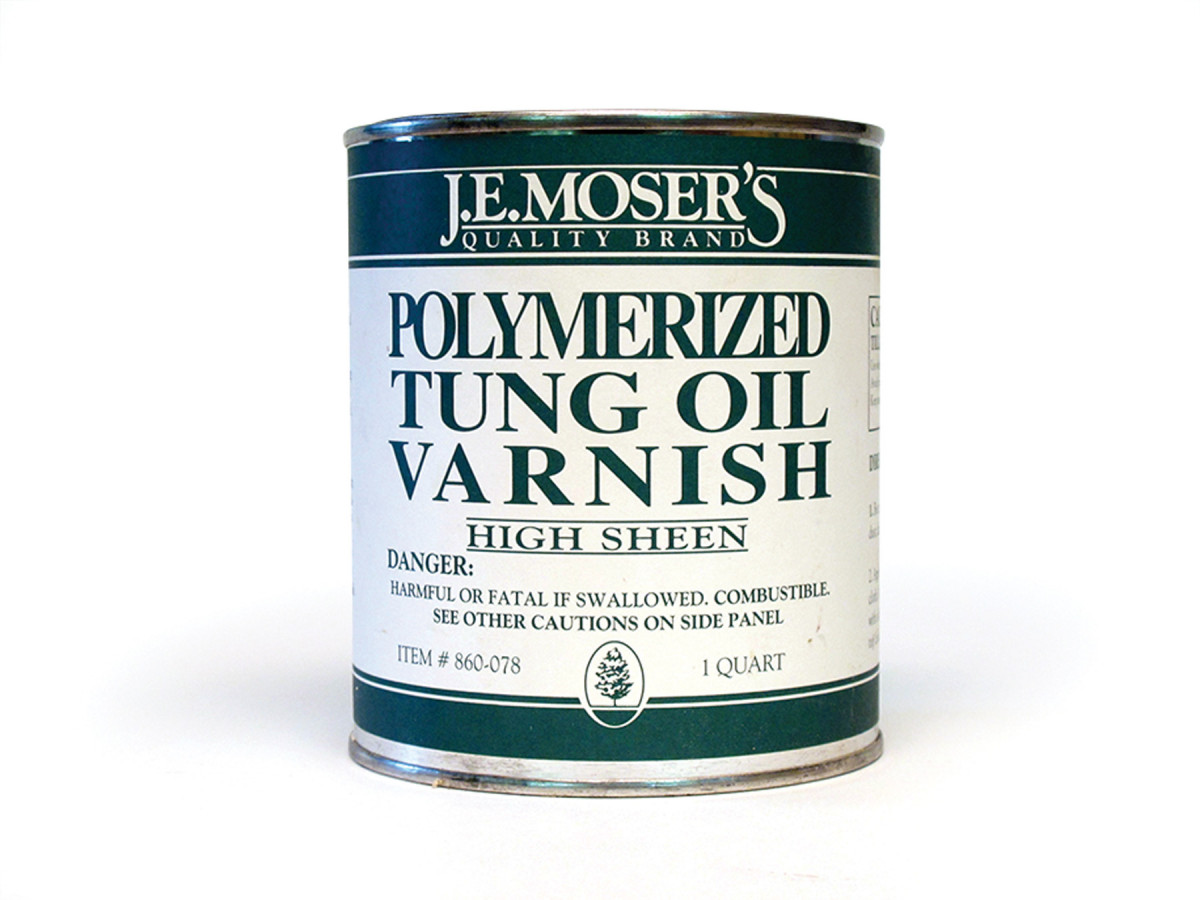
Varnish. Getting in on the polymerized action, and adding to the confusion, Woodworker’s Supply sold this varnish for a while in the 1990s with “polymerized” in the name.
Back in the early days of the woodworking renaissance in the 1970s, the word “polymerize” was tossed around a lot, usually to indicate that an oil, most commonly Watco Danish Oil, cured or polymerized “in” the wood rather than “on” the wood. I remember myself using the word with clients to impress them. I had no idea what I was talking about, but I was using Danish oil, and “polymerize” made it seem special.
Of course, this is silly. All drying oils polymerize in the wood because they soak in and cure.
Then a product called polymerized tung oil started getting a lot of attention. It’s different than regular tung oil because it is put through a cooking process that changes it chemically, making it cure much faster, harder and glossier.
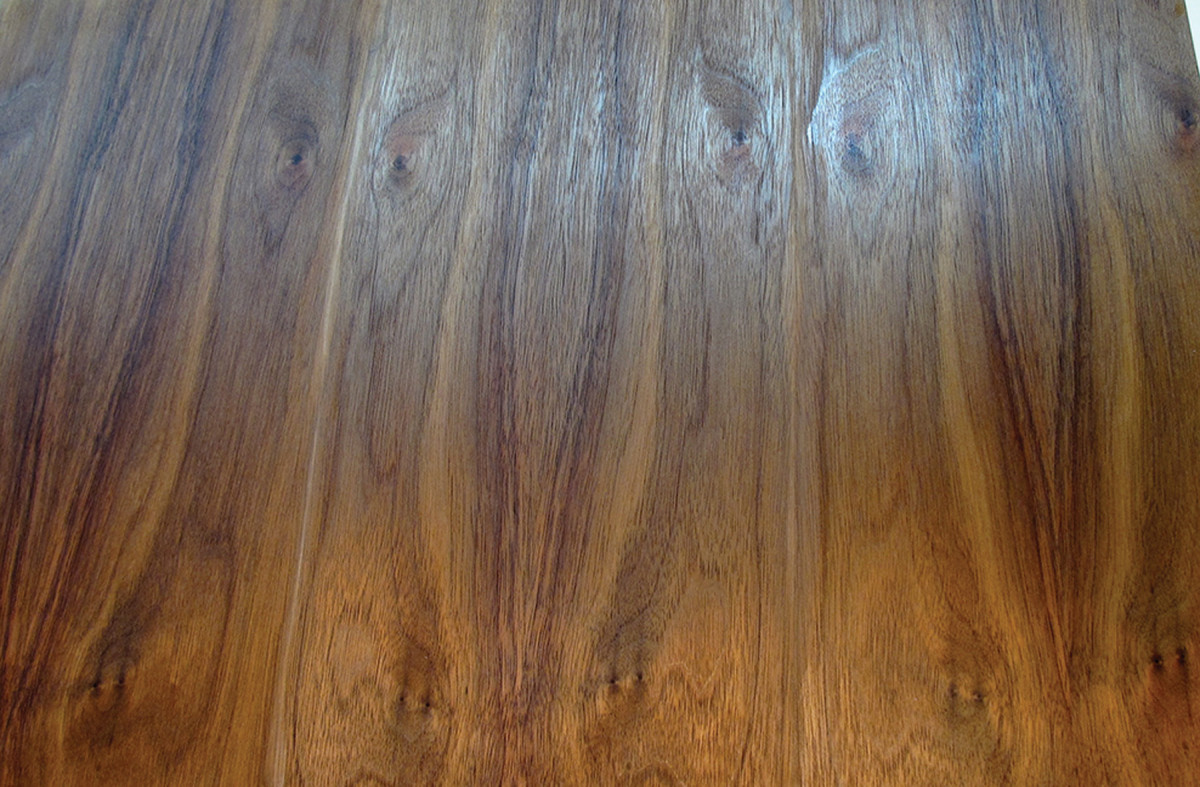
Two coats. I applied just two coats of the three oils (from left: Tried & True, Southerland Welles and Tru-Oil) to this walnut veneered plywood and wiped off the excess. Notice the shine produced by Southerland Welles and Tru-Oil.
The process begins by heating the oil to around 500° Fahrenheit in an oxygen-free, inert-gas environment until the oil begins to gel, then it is quickly cooled. This process changes the chemistry of the oil by causing the carbon atoms to crosslink (different from oxidizing) and thickens the oil considerably, so mineral spirits are added to make the product workable. More or less thinner is added to create “low-lustre,” “medium-lustre” and “high-lustre” versions.
This finish, Southerland Welles Polymerized Tung Oil, developed a following and I included it in both editions of “Understanding Wood Finishing.” To make it a category, rather than just a unique finish, I combined it with Tru-Oil, a gunstock finish that I believe to be linseed oil put through a similar cooking process, though the company won’t confirm this. At least, the two finishes act similarly.
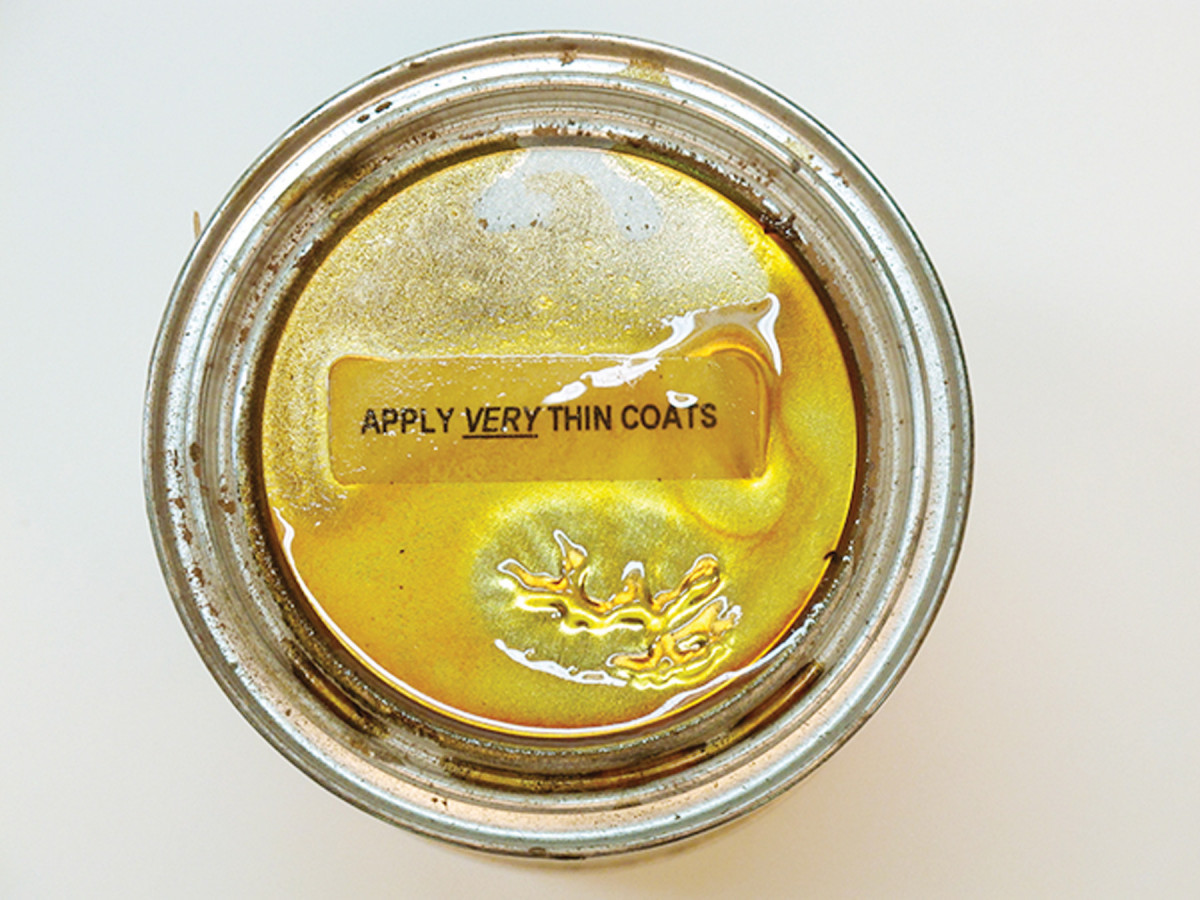
Thumbprint. Here is my thumbprint in Tried & True polymerized oil that is 20 years old. The oil barely even gelled.
But the category then became unwieldy, and this is part of what makes the term so confusing. In the early 1990s a company called Tried & True introduced several products it claimed were polymerized. In fact, they are little more than raw linseed oil that has been exposed to air for a time to start the curing process.
Though still technically “polymerized” by my definition, this product is about as different as it can be from the other two polymerized oils. They cure fast and hard if kept thin. Tried & True cures much too slowly in my opinion to be useful as a wood finish. It’s essentially raw linseed oil.
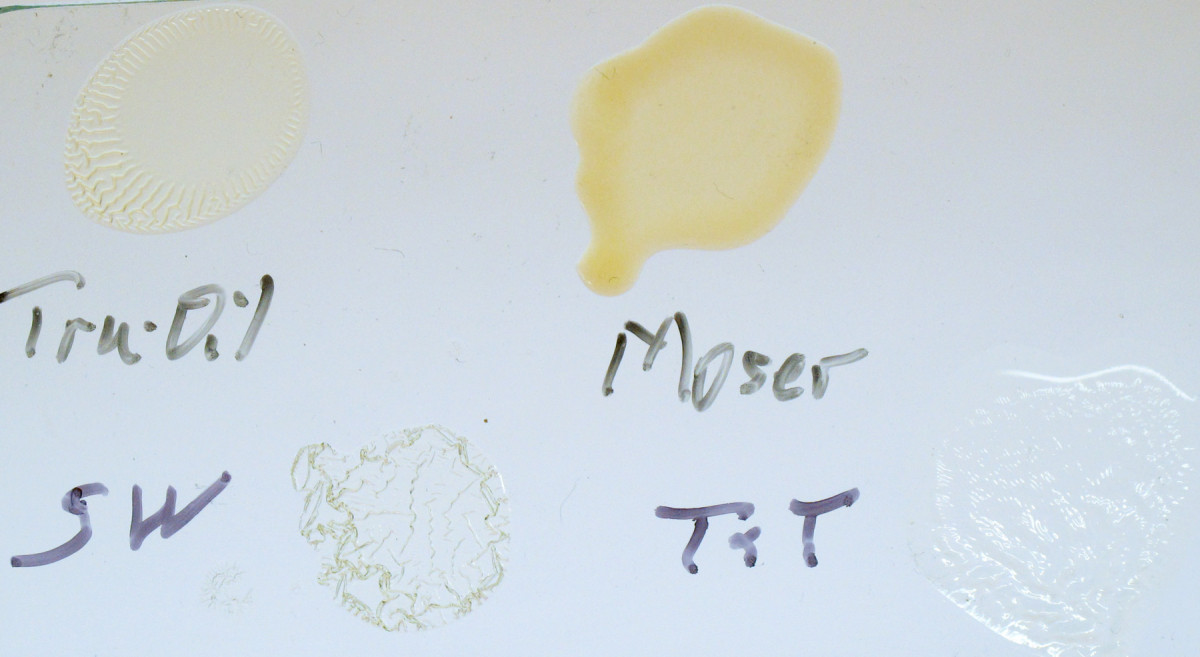
Puddles on glass. I applied puddles of all four products claiming to be polymerized on glass. Notice that Tru-Oil and Southerland Welles dry similar to drying oils, Moser’s Polymerized Tung Oil Varnish dries like varnish and Tried & True didn’t dry at all.
It got its start with several articles in Fine Woodworking touting its food-safe qualities because it doesn’t contain Japan driers, and this is exactly how the company represented it to me. As you might be aware, my take on food safety is that all finishes are food safe when fully cured.
To sum up, polymerization is simply the way oils and varnishes crosslink and cure. Some manufacturers begin the polymerization before putting the finish in the container and call their finishes “polymerized oil.” But the products promoted this way are too different to be included in the same category. The result is confusion.
Wood Turners
A reader on my blog suggested using Tru-Oil to finish pens right on the lathe – applying the finish like friction polish, holding the oil-damp cloth on the wood to create heat and speed the drying while the lathe is spinning.
I tried both Southerland & Welles and Tru-Oil using this method, and they worked reasonably well. They dried a little slower than friction polish, which is shellac. But they have the advantage over shellac and lacquer of producing a much more durable (body-oil resistant) finish because they crosslink.
I thought Tru-Oil worked better because it produces a better build and higher gloss quicker.
Here are some supplies and tools we find essential in our everyday work around the shop. We may receive a commission from sales referred by our links; however, we have carefully selected these products for their usefulness and quality.








